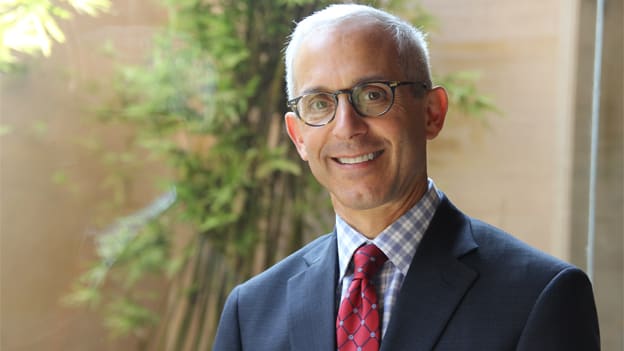David Altman talks about the changing facets of leadership development

David Altman, Ph.D., is Chief Operating Officer of the Center for Creative Leadership (CCL). He oversees global P&L, IT, Leadership Solutions/Knowledge Management, Operations and Digital Learning. He has also served as EVP/MD of CCL-EMEA (Europe, Middle East, and Africa) and nine years as VP/SVP/EVP of CCL’s global Research, Innovation and Product Development group. Before joining CCL, David has spent 20 years working in academic medical centers (Stanford University and Wake Forest University).
In this special conversation with People Matters, David Altman talks about cultivating leadership, key challenges related to leadership development programs, and the elements of good leadership.
You’ve had a diverse career experience. From academia, research, innovation, and product development to becoming a COO, how do you think your career trajectory has unfolded?
Throughout my career, I have tried to put myself in positions where the work that I did made a tangible impact. When I reflect on my career, improving the human condition has been a common thread through all the roles and functions that I have been in. While I started off primarily doing research and community-based work, I joined the research and innovation function at CCL and have thus spent time working on leadership issues across the globe. And in the last four years, I worked across Europe, Middle East & Africa, doing cross cultural work, running the business and managing the profit and loss.
But mostly, my work these days has revolved around improving the human condition by building better leadership organizations and cultivating more effective leadership in individuals.
Most organizations have a clear business strategy, but they don’t have a clear leadership strategy to support it. How do you help organizations develop individuals and teams and also develop a leadership culture (that they need) to be successful in implementing their business strategies?
We talk to a lot of leaders around the world, in the public sector, in NGO’s an in the private sector. Most can articulate what their business challenges and business strategy are. But when we ask about their leadership strategy, we often get a pause. What we see is that there is a gap between leaders connecting the business strategy they’re pursuing and the leadership that they need in order to execute the business strategy.
When you engage leaders in a discussion about strategy and culture, they all say “people” will either make or break the organization. But it is not just about individual leaders; it is also about the culture of the organization. In almost all cases, leaders say that there is a gap between their culture ‘now’ and the culture they ‘need’ in the future to be successful.
This is where we come in. We get leaders to think about the way they are doing things relative to what they want to accomplish as an organization; and cultivating a dynamic, agile and resilient culture that can take advantage of the many challenges that organizations face in the dynamic world in which we live.
Many traditional, hierarchical global companies are struggling to adapt to the VUCA world and need to change their mindsets to survive in the new world order. Tell us the challenges you face when you are enabling them for this?
Organizations often face challenges related to their prior success. When organizations, in traditional or non-traditional markets, are historically successful, it can be difficult for them to challenge the status quo, reexamine the business processes/strategies, critically look at their talent or reshape their culture in light of changes in the marketplace. When things are going reasonably well, it’s harder to change. However, when a business is facing an existential threat, there is no other choice except to act. But transformation or change is a slow process; it is analogous to boiling a frog. If you want to boil a frog, you can’t just throw it into hot water; it will jump out. You have to put it in cold water and slowly heat it up. Organizations should constantly put themselves in cold or warm water so that they don’t find themselves in a situation in which they need to jump into boiling water to survive.
How can organizations make the most of formal development programs? And how do you adjust or integrate system and strategy for providing leadership solutions?
One of the challenges related to leadership development is that organizations want a quick fix; they want to put their leaders through a program for a day or two or a week, and expect them to change themselves and the organization. But such an expectation is inconsistent with what we know about human behavior — humans don’t have a behavior change switch that can be turned off or on very easily.
Likewise, leadership development is a life-long journey and it requires vigilance and many attempts at behavior change. And, of course, it also involves coping with recidivism, failure, back sliding and changing targets.
Creating sustainable change requires incremental changes accumulated through hard work, innovation and paying attention to the context surrounding a change imperative. Organizations that view human capital development as a marathon, as something that has to become a core part of the organizational DNA, are the organizations that are successful in the long-term. If you work in an organization that has a developmental mindset, a coaching culture, a focus on getting better every day, and a belief in the potential of people – the odds will be in your favor.
The way that organizations approach leadership development also depends on their goals. If you simply want content to increase their awareness, they can include digital assets that includes self-learning or peer learning. If you want to develop a pipeline of future leaders, it’s not only about identifying high potential talent – it is about what you are going to do with them? What is the ecosystem that you’re going to build in the organization that you’re going to facilitate individuals to prosper and flourish?
Our pedagogy is that we need to be more expansive in how we approach leadership development and try to democratize it, with different prize points, different delivery models, so that more people can benefit from their own development. Scaling leadership development can be a potent way to change the culture of an organization.
In your book “Discovering the Leader in You”, you talk about the problem of “drift” – where leaders begin to question their own abilities, and the direction their life takes. Why does this happen?
A core part of being a good leader is being self-aware, understanding your values, strengths, weaknesses, and how you connect and relate to other people. This is part of emotional intelligence — self and social awareness, and self and relationship management. Individuals or leaders who are not self-aware, don’t acknowledge or accept uncertainties that life throws at them, fall into the problem of what we call ‘drift’ — such leaders simply go through the motions of leadership but they do not evolve or develop as leaders and as human beings. In the book, we ask leaders to take a step back and accept that life is not linear and use those non-linear situations as opportunities for growth and development.
In a series of studies, we asked leaders about the experiences that were instrumental in their career and the lessons they learned from these experiences. Most of the experiences (around 70 percent) were related to hardships, challenges, expat assignments, managing change, dealing with failure, not being promoted, and living in another country. Thus, it is these “lessons of experience” and reflecting on these experiences to improve yourself and others that make great leaders. Leaders and aspiring leaders are well advised to put themselves in uncomfortable positions or stretch assignments and to deeply reflect on what they learn about themselves, others and the context. In doing so, they will optimize their development as leaders and humans.










